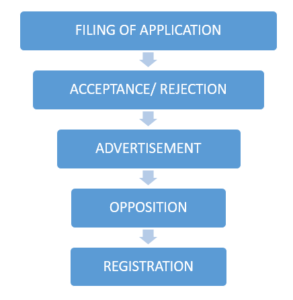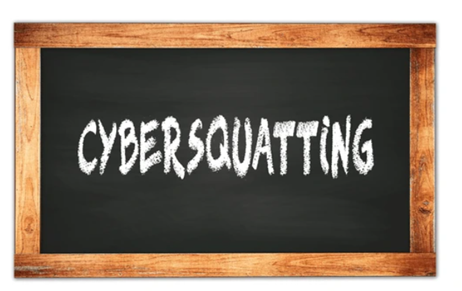Artificial intelligence has a wide range of effects, including on intellectual property law. At best…
Trademark Law Bangladesh: An Abridgment
Bangladesh is a signatory to the Trade Related Aspects of Intellectual Property Rights (TRIPS) Agreement under the World Trade Organization (WTO), which came into force in 1995. TRIPS aim at harmonizing the intellectual property laws with most of the world. Hence, all the signatories of the agreement have a uniform IP law subject to minor modifications as allowed by the agreement. Bangladesh being in its transitional period complies with TRIPS to a larger extent (not fully compliant with international IP regime) and still in its process of harmonizing with TRIPS policy. Let’s take a sneak peek into the functionality of IP laws in Bangladesh in relation to the various sections prominently referred to from The Trademark Act, 2009:
The Trademarks Act, 2009:
Meaning of Trademark:
A trademark is any symbol, word, number, phrase, design, or any combination thereof which is used to identify the source of goods or services. The Trademarks Act, 2009 defines the term in Section 2(8). It provides for the following classification of marks:
- Registered Trademark
- Mark
- Certification Trademark
A trademark is:
- a registered trademark or a mark used in relation to goods so as to indicate a connection in the course of trade between the goods and the person having the right as proprietor to use the mark;
- a mark used in relation to a service so that it leads to the indication that the person has the right to use the mark in the course of trade as a proprietor;
- a mark used or proposed to be used (in future) in relation to any service or goods indicating a connection, between the goods and the person having the right, either as proprietor or as registered user (permitted user), to use the mark.
A trademark is generally used to identify the source for goods or services. Bangladesh has adopted the 9th Edition of NICE classification of goods and services. Hence, there are total 45 classes of goods and services, out of which 1-34 are goods, and 35-45 are services.
Procedure for Registration:
There are various steps involved in the procedure for registration:
Step 1: FILING OF APPLICATION – SECTION 15
- Any person claiming to be the proprietor can file an application for registration of a mark used or proposed to be used.
- The person(s) shall file separate application for each class of goods or services.
- The application must be filed at the Head office or any branch of the Trademark Registry having territorial jurisdiction over the principal place of business. If the person does not carry on business in Bangladesh, the application must be filed in the office having territorial jurisdiction over the place mentioned in the address for service in Bangladesh.
- Requirements:
- Name of the Applicant(s)
- Address and Nationality
- Specification of goods
- Fees: 3500 taka
- Form- “TM-1”.
Step 2: ACCEPTANCE – SECTION 15
- The Registrar may accept the application absolutely and go ahead with further process.
- He may refuse to accept the application recording the grounds of refusal.
- He may conditionally accept the application, i.e. subject to amendments, modifications, conditions or limitations.
Step 3: ADVERTISEMENT – SECTION 17
- After the conditional or absolute acceptance of the application, the Registrar may advertise the application in the prescribed manner along with the prescribed fees.
- If there are any corrections in the application under Section 19, it will be advertised again after such correction to the satisfaction of the Registrar.
- Form- “TM-9”
- Fees- 1000 taka.
Step 4: OPPOSITION – SECTION 18
- Within 2 months from the date of advertisement of the application, any person may oppose the same by serving due notice to the Registrar via form TM-5 along with the prescribed fees (2000 taka).
- He shall, within 1 month from the date of receipt of the notice, serve a copy of the same to the applicant.
- Thereafter, the applicant shall file a counter within 2 months from the date of receipt of such notice to him via form TM-6 and the prescribed fees (1500 taka). If a counter is not filed, the application shall be deemed to have been abandoned.
- The Registrar shall serve a copy of such counter to the opponent.
- All the evidences upon which the applicant and opponent rely shall be submitted in the prescribed time and manner to the Registrar, and they shall be granted an opportunity of being heard if so desired upon application via form TM-7 or TM-23 along with prescribed fees (1000 taka).
- The Registrar, after following due process of opposition shall decide whether to accept, conditionally accept, or reject the application.
- Notwithstanding anything contained in the Act, the opposition proceedings must be wound up/ concluded in 120 working days.
Step 5: REGISTRATION – SECTION 20
- If the application is accepted or not opposed or the notice period of opposition has expired, or it has been opposed and the decision is in favour of the applicant, the trademark shall be registered by the Registrar.
- The applicant shall be issued a certificate of registration with the seal of the trademark registry.
- Such certificate shall be issued within 150 working days from the date of filing of application.
- The duration of the trademark shall be of 7 years, and can be renewed by paying the prescribed fees, from time to time.
- The Registrar may renew the registration of the trademark for 10 years from the date of expiration of original registration or the last renewed registration on application by the applicant.
It takes around 24-36 months to get a trademark registered in Bangladesh in a smooth case.
Workflow:
Rights conferred by Registration:
Registration of a trademark confers the following rights under Section 25:
- Exclusive right to use the trademark in relation to those goods and services for which it has been registered.
- Obtain relief against infringement of the same in accordance with the Act.
It also provides that no person except the registered proprietor/ owner of the trademark shall use the same in respect of the goods and services for which it is registered under the Act, without the consent of the registered owner.
The Act, just like Indian law, also incorporates the common law remedy of “Passing Off’ in its Section 24. It provides that no infringement action be instituted for an unregistered Trade Mark. Secondly, nothing in the Act shall be deemed to affect the right of action against any person for passing off goods or services of another person and any other related remedies.
Infringement:
Section 26 deals with the Infringement of Trademarks. Usage by a person other than a registered proprietor of the identical or similar trademarks, the Trade Mark deemed to be infringed. On the other hand, Section 27 deals with the acts that do not amount to infringement. Lawful user, permitted use, etc. are provided in the section.
Assignment and Transmission:
The Act, in Chapter V, comprehensively provides for assignment and transmission of a registered trademark by the registered proprietor, with or without the goodwill (Section 34). An unregistered trademark shall not be assignable or transmissible except along with the goodwill of the business concerned (Sec 35) under certain circumstances provided in the same section, it can be assigned or transmitted without the goodwill. Moreover, Section 38 incorporates assignment and transmission otherwise than in connection with the goodwill with conditions of fulfillment attached.
Offences and Penalty:
Section 71 firstly discloses the meaning of applying trademarks and trade descriptions, and secondly Section 72 mentions the circumstances when the Trade Marks are falsified or falsely applied. The penalties under the Act are as under:
- Section 73: Penalty for falsifying or falsely applying Trademark: Imprisonment may extend to 2 years, but not less than 6 months, and/or fine which may extend to 2 lac taka, but not less than 50 thousand taka. For a second or subsequent conviction, the imprisonment would range from a minimum of 1 year to 3 years, and/or fine extendable up to 3 lac taka, but not less than 1 lac taka.
- Section 74: Penalty for selling goods to which a false trademark or trade description is applied: Imprisonment for a term up to 2 years, and/or fine. For a second or subsequent conviction, imprisonment for a term up to 3 years, and/or fine.
- Section 76: Penalty for falsely representing a trademark as registered: Imprisonment for a term up to 1 year, but not less than 6 months, and/or fine up to 1 lac, but not less than 50 thousand taka.
- Section 77: Penalty of improperly describing a place of business as connected with the Trademarks office: Imprisonment for a term which may extend to 1 year but not less than 6 months, and/or with fine which may extend to 1 lac taka but not less than 50 thousand taka.
- Section 78: Penalty for falsification of entries in the Register: Imprisonment for a term which may extend to 1 year but not less than 6 months, and/or fine, which may extend to taka 1 lac (84,600 INR approx.) but not less than 50 thousand taka.




